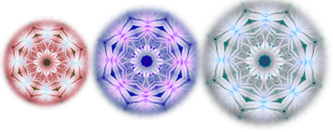
If you’re anything like me you probably like a bit of science to back up the ancient wisdom of the yogis…. As a Yoga therapist and a doctor of Chiropractic I always get excited whenever I stumble across a research in health that I can link to Yoga. Let’s take a look at how the ancient yogic breathing exercises really work in the light of today’s science!
Did you know that breathing through your nose is much healthier than breathing through the mouth? Why? …. Well, one of the reasons is that the air we inhale gets purified in our nasal passages by the respiratory mucosa. Another, maybe even more beneficial aspect, is that nasal breathing generates more oxygen in the blood. This happens thanks to Nitric Oxide (NiOx) that forms in the sinuses and dilates the blood vessels. The blood vessels that are in contact with the alveoli in lungs expand allowing for more oxidization of the blood. NiOx found in the sinuses is also toxic to bacteria and therefore could be beneficial in prevention of infections. The heart also benefits from NiOx as it’s an important part of Nitro-glycerin which dilates the coronary arteries assuring for optimal heart health.
Yogis have recognized the benefits of nasal breathing many years ago and applied practices such as netti pot and humming to clear the nasal passages and to potentiate the production of NiOx, which is lowered if sinuses are congested. I hope this piece of information has already inspired you to ŌMMMMM more or hum your favourite songs! You can even find a reference in the Bible that suggests breathing through the nose is important: “And the Lord God formed man of the dust of the ground, and breathed into his nostrils the breath of life; and man became a living soul” [Gen. 2:7].
So if you ever wondered what the point of Ujjayi breath is here you have it. Other benefits include building internal body heat and helping to focus the mind inward. Another important benefit of nasal breathing especially while contracting the glottis (Ujjayi) is the stimulation of the Vagus nerve which tones the parasympathetic nervous system (PNS). Healthy PNS helps us to relax, conserve energy and has a positive effect on the heart function, digestion and mood disorders such as anxiety or depression.
Why is breathing through one nostril different than breathing through both?
Have you ever noticed that your nostrils “take turns” throughout the day? The chance is you have not. This is called the nasal cycle and it has been estimated that the partial congestion of one nostril lasts approximately 90 minutes. Yogis have been aware of this cycle for thousands of years and connect it to the balance of the Ida and Pingala Nadis. They use the alternation between those two Nadis to understand mind-body states, and to recognise if the body is diseased. Both of those channels originate in the Muladhara chakra. Pingala terminates in the right nostril, represents the sun, has a hot and masculine quality and is represented by the sound “Ha”. Ida terminates in the left nostril, represents the moon, is defined as having a cooling and feminine quality and is represented by the sound “Tha”. Hence “Hatha” Yoga is about balancing our energies (sun and moon).
To balance those two energies various pranayamas are practiced. Anuloma Viloma (alternative nostril breathing) balances Ida and Pingala introducing harmony to body and mind. Surya Bhedana (right nostril breathing) stimulates the brain and increases body heat. Chandra Bhedana (left nostril breathing) calms the brain and cools the body. Yogis also believe that breathing through one nostril will activate the contralateral brain hemisphere and use alternative nostril breathing to balance the two sides of the brain to encourage physical, mental and emotional well being.
How can we make sense out of it today?
This subtle physiological phenomenon has been linked to the function of the Autonomic nervous system (ANS), which controls involuntary bodily functions such as heart rate, breathing and digestion. The ANS is controlled by the hypothalamus, which receives messages from the receptors in the nasal mucosa that get stimulated as the air flows through the nose. The right nostril breathing relates to the sympathetic nervous system’s activity and the left brain hemisphere. The left nostril breathing will affect just the opposite – the parasympathetic nervous system and the right brain hemisphere.
What does this mean? Well, first of all, it means the yogis knew what they were talking about so many years ago! Today’s research keeps confirming the yogic knowledge through various studies. Interesting study has examined the link between the hemispheric function and the immune system, and the results revealed poorer immune function in individuals with weaker left hemisphere. We now know, that we can improve our physical well being with pranayama and that breathing through one nostril will stimulate the contralateral brain hemisphere! This research helps us to connect the dots … If we can influence our brain hemispheres through breathing, we can influence our immune function!
So now we know how beneficial pranayama and breathing in general is, we can start being more aware of our breathing pattern, learn to direct our breath to places of tension and expand and free those stagnant areas. We can use our breath to slow down, promote calmness and alleviate anxiety. Remember every little counts, even if you only have few minutes. You can start by being conscious of your breath, breathing more deeply or practicing Ujjayi – while driving to work, standing in a line or cooking.
I hope you found this article interesting and informative and that you are excited about introducing more breath work to your asana practice!
FEEL FREE TO LEAVE COMMENT ON THIS POST BELOW OR SHARE THE ARTICLE ON YOUR SOCIAL FEEDS!
